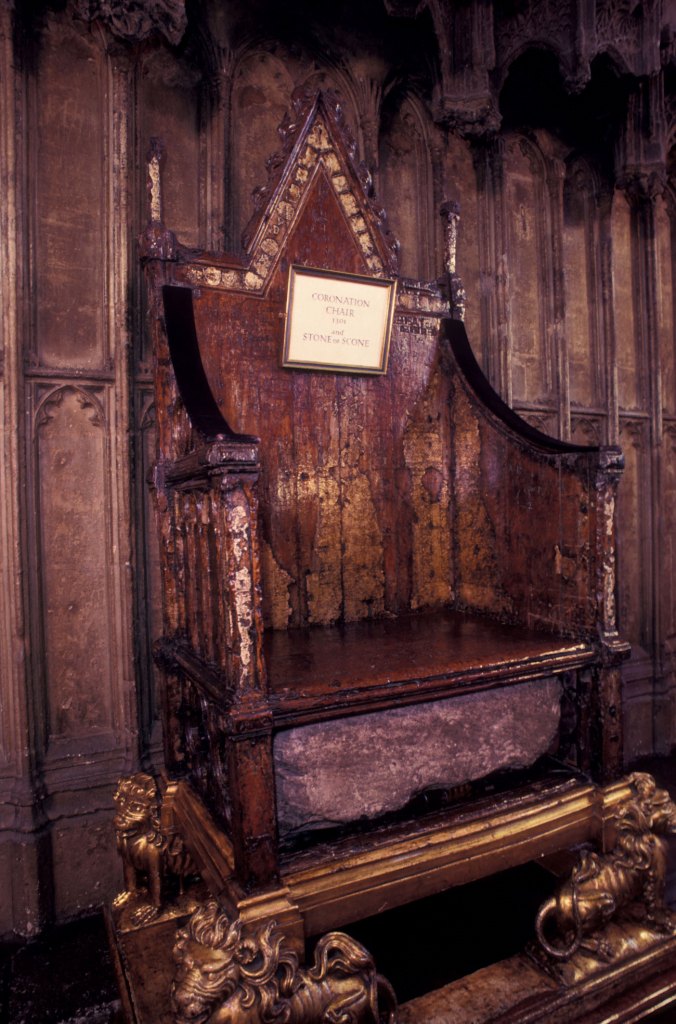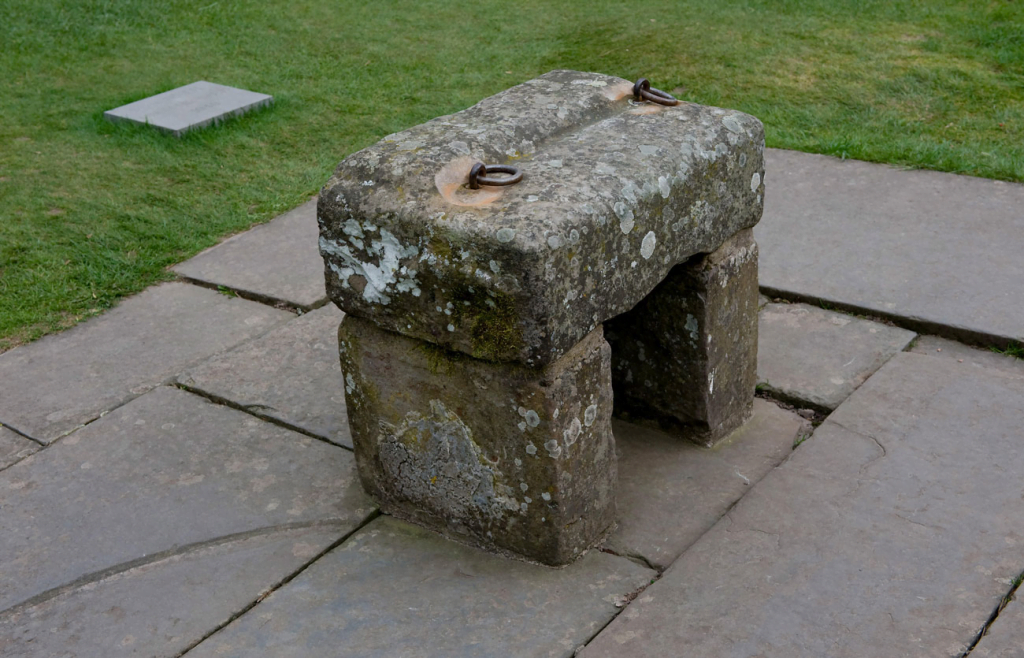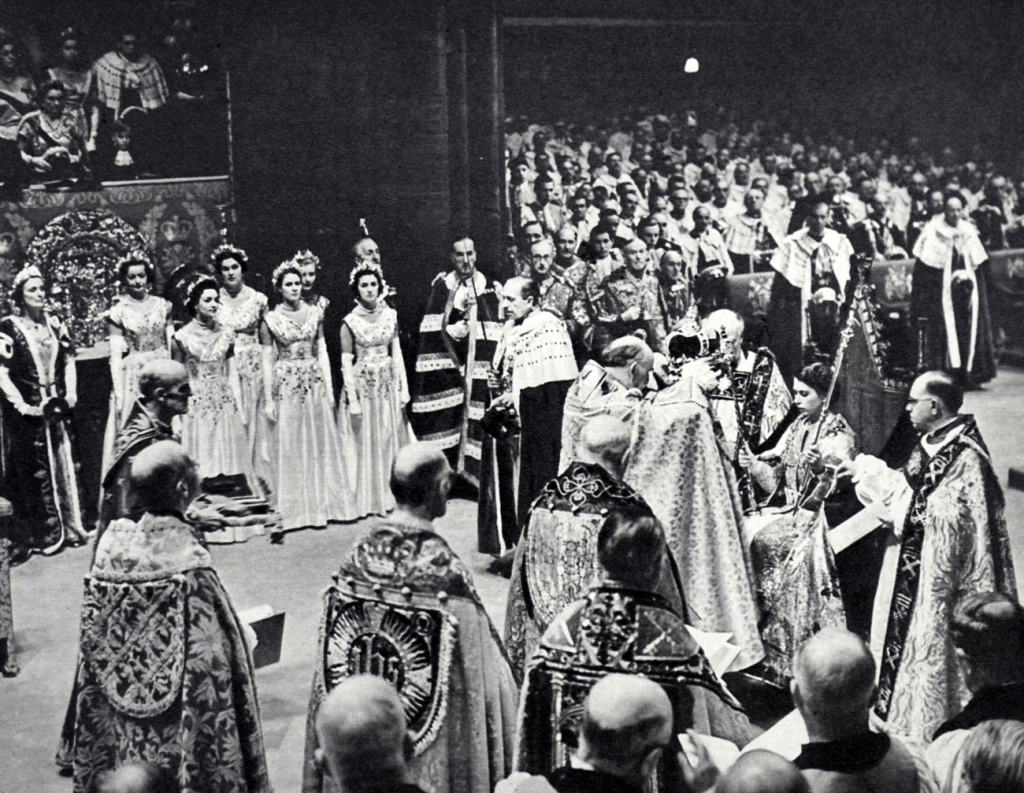On May 6, 2023, King Charles III will sit on the Coronation Chair, a 700-year-old wooden seat. The chair was commissioned to enclose the Stone of Scone, a stone that legend links to a biblical passage, and has been used since the 9th century for the coronation of Scottish kings. The oak chair, covered in graffiti, is being restored before the coronation of King Charles III.
The chair has been used for the coronation of English kings since the 14th century
King Edward’s Chair or the Coronation Chair is the oak throne that has been in proven use since 1399 for the coronation of King Henry IV. Most historians agree that it was used as early as 1308 for the coronation of Edward I, hence its name. It was then used for the coronation of all the other kings of England, then the kings of the United Kingdom, until the coronation of Queen Elizabeth II in 1953. Queen Victoria also used it for her Golden Jubilee service in 1887.

The wooden throne is placed in front of the altar of Westminster Abbey and has been used there for centuries for thirty-eight coronations. Extremely fragile, the chair is being restored for use on May 6, 2023 by King Charles III. The imposing chair is also covered with tags and graffiti left by visitors who may have approached the throne when it was on public display in the 18th and 19th centuries. When not in use, the chair is now displayed and protected in St. George’s Chapel in Westminster Abbey.

The wooden throne was commissioned to enclose the Stone of Scone
Dr. George Gross of King’s College London tells the BBC that the throne is not only an important historical relic, there is also a spiritual aura around the chair. It is a “deeply mystical relic” that was considered to “emit a form of spiritual radioactivity,” the expert explains. Indeed, when the chair was commissioned in the 14th century, its function was to house the Stone of Scone. The stone was returned to Scotland in 1996 and removed from the wooden chair. It is now on display at Edinburgh Castle but is expected to make the journey to London to be present at the coronation of Charles III.

The Stone of Scone or Stone of Destiny (Lia Fàil in Gaelic) links the Scottish kings to biblical texts. The sandstone block is even mentioned in chapter 28, verse 18 of Genesis, described as a stone that served as a pillow for Jacob when he was in Bethel. According to the legend, as written on the Westminster Abbey website, it would be the sons of Jacob who would have transported this stone to Egypt. Later, Gathelus, ancestor of the Scots, was married in Egypt to Scota, the daughter of the pharaoh. The stone would have been brought back to Spain, then to Ireland. The Scottish kings of the time lived in the kingdom of Dal Riada (a kingdom separated by the sea, which covered the west of Scotland and the north-east of Northern Ireland), before conquering all of Caledonia (present-day Scotland).

Whatever its origin, the stone has been used for coronations of Scottish kings since the 9th century. The kings of Scotland would stand on the stone during the ceremony. It is believed that King Kenneth I was the first to use the stone for his coronation in 847 and subsequent kings in the same century are known to have used it.
King John Balliol of Scotland was the last Scottish king to be sworn in standing on the Stone of Scone in 1292. A few years later, the English king Edward I invaded Scotland and seized the stone, which he brought back to England and entrusted it to the abbot of Westminster. He then had a wooden throne made to enclose it. The Scots have repeatedly tried to recover it, as was the case when it was stolen by Scottish nationalists in December 1950.

The wooden chair was once covered in gold and decorated with bird, foliage and animal motifs. The figure of a king (perhaps Edward the Confessor or Edward I) resting his feet on a lion was painted on the back of the chair. The chair only left the abbey during Cromwell’s republican period and then during the Second World War, when it was stored in Gloucester Cathedral.
King Charles III will in turn be crowned in this chair on May 6. Although the ceremony will be modernized and shorter than that of his mother in 1953, it will not lack pomp. It is already known that King Charles III has commissioned 12 new pieces of music specially composed for the occasion, with an anthem by Andrew Lloyd Webber. There should be 2,000 guests, instead of the 8,000 guests who attended the coronation of Queen Elizabeth II, and as tradition dictates, Queen Consort Camilla will also be crowned on the same day at her side.
Photos credits: World History Archive / Alamy / Abacapress
